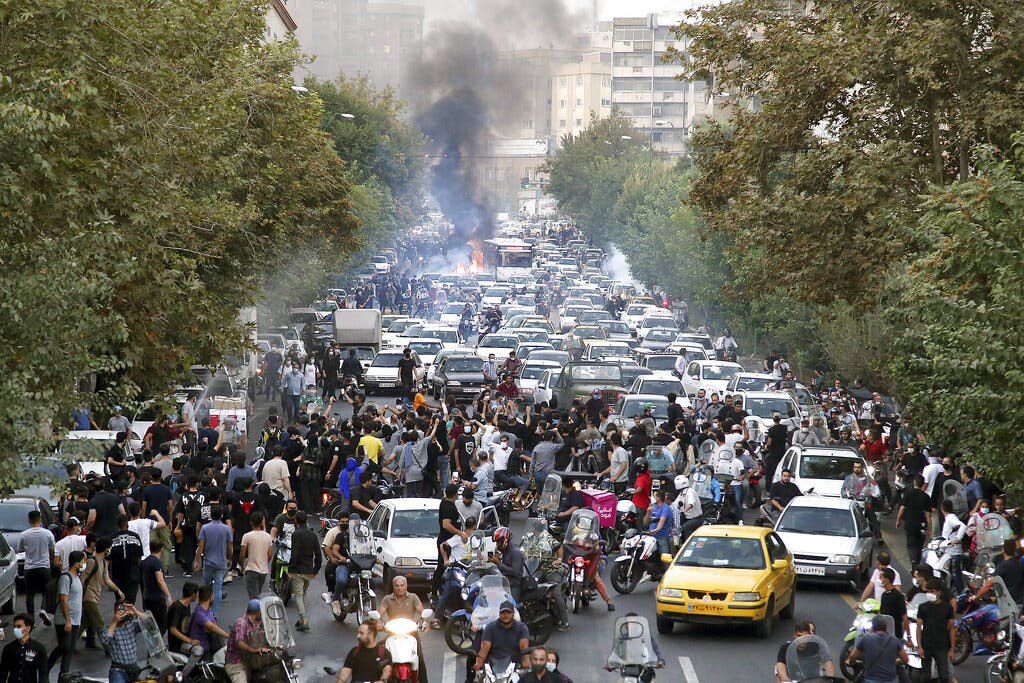How To Tell If the Iranian Protesters Are Winning
One telltale sign would be defections among the Islamic Revolutionary Guards Corps and other regime enforcers.

What would indicate to outsiders that Iran’s revolt is succeeding? One important sign would be seeing the armed men who currently open fire at protesters turn on the regime and join the anti-Islamic Republic movement.
That was, in fact, how we knew that the Pahlavi regime was doomed. “On Feb. 11, 1979, after days of running street battles and uncertainty, Iran’s military stood down and allowed the Islamic Revolution to sweep across the country,” the Associated Press reported.
The army’s defection to the Ayatollahs’ side actually started prior to that date. Many in the highest echelons of the military and the notorious secret police, known as Sabak, knew the tide had turned long before Shah Mohamad Reza Pahlavi had left the country; as street fighting intensified, the troops sensed the public’s mood, laid down their arms, and started chanting, “Death to the Shah.”
The lesson of that episode was not lost on the Islamic Republic’s founder, Ayatollah Khomeini. Rather than relying solely on the national army and police, he founded a parallel structure designed to defend the Islamic revolution. He created a system of incentives and threats that would keep these new forces loyal to the regime, rather than to the nation.
The Islamic Revolutionary Guards Corps, with its octopus-like arms, is at the top of that structure. Under it are the quasi-military Basij militias. The complex structure is semi-autonomous, but it is ultimately controlled by the supreme leader.
The Guards are heavily invested in the maintenance of the oppressive regime. Beyond its various military arms, the IRGC controls many of the country’s most important economic sectors. Beyond the fear of losing those vast powers, the rank-and-file are now told by the IRGC brass that the protesters would exact deadly retaliation if the regime collapses.
So far, repression of the intensifying nationwide anti-regime protest has been left mostly to the police and some Basij militias. These forces are yet to show signs of success in dowsing the national fires. In some remote towns and villages, police have completely left the scene.
Now, however, the IRGC is reportedly entering the arena in force, and the death toll is bound to climb. While human rights groups say the toll is as many as 240 people to date, including 28 children, the numbers are likely much higher, as the regime has blacked out much of the country’s communication systems.
Scenes of violent confrontation between young men — and, even more so, women — and the regime enforcers are nevertheless posted hourly on social media. Many of the most-shared videos show highschoolers, backed by their male schoolmates, refusing to heed orders from armed men, who in turn shoot back with tear gas, rubber bullets, and, increasingly, live ammunition.
For the IRGC and other regime enforcers, “the longer the protests go on, the higher the risk of defections — especially when orders come from the top to fire at children,” the policy director of United Against Nuclear Iran, Jason Brodsky, told the Sun. Familial and other ties can complicate things for the enforcers even further, he says.
Some top regime figures, Mr. Brodsky notes, already have rebels within their families. The chairman of the Assembly of Experts of Iran, one of the regime’s top political bodies, Ahmad Jannati, has a son, Hossein, who is a member of an exiled anti-regime group, the People’s Mojahedin Organization of Iran, known as MeK. The supreme leader’s brother, Hadi Kemanei, was beaten up by Basij militiamen.
The current situation amplifies such ties. Yes, IRGC members and other loyalists have a lot to lose if the regime collapses, and they may also fear retaliation if the protesters attain power, yet would a mid-level Basij enforcer obey a shoot-to-kill order against a group of hijab-less high school girls if his niece and daughter were among them?
America, activists, and various diaspora groups could use Persian-language media “to encourage defections as well as foster hesitation about carrying out such orders,” an Iran watcher at the Foundation for Defense of Democracies, Behnam Ben Taleblu, says. “Plainly, this would be messaging beseeching Iranians not to kill their compatriots.”
If security forces cease to fire or defect, however, the regime could bring in its all-Shiite foreign legion. IRGC-trained militias from Lebanon, Yemen, the Palestinian territories, Afghanistan, and Pakistan would have “less compunction about killing protestors they do not even know or share a bond or affinity through language, culture, or nationality with,” Mr. Ben Taleblu says.
Yet, as the revolution intensifies with calls to overthrow what journalist and activist Masih Alinejad calls the “gender apartheid” regime, a tipping point could be around the corner. The first telltale sign would be regime enforcers recalculating and deciding to join the rebel side.

